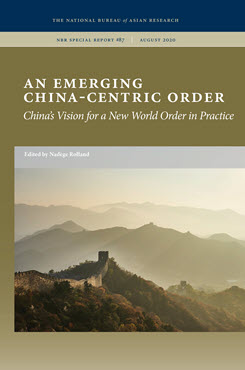NBR Special Report no. 87
China-Led Multilateralism
The Case of the 17+1 Format
This essay examines China’s rationale behind setting up a nominally multilateral cooperation forum with Central and Eastern European (CEE) countries and assesses the implications for Beijing’s broader strategic vision.
Executive Summary
MAIN ARGUMENT
China’s predominant rationale for originally establishing the 16+1 (since April 2019, the 17+1) was economic. Over time, however, the format has taken on political and normative aims. This modification has coincided with the shift in China’s strategic vision since Xi Jinping assumed the leadership position in 2012–13. The format was created in April 2012 by the previous Chinese leadership with an economic-oriented focus. During Xi’s first term, a conceptual shift occurred in Chinese foreign policy from Deng Xiaoping’s approach of “keeping a low profile” (taoguang yanghui) toward Xi’s own vision of “forging ahead” (fenfa youwei) with an aim to make China more visible internationally. This included the promotion and projection of Chinese norms, values, and standards, exemplified by the grandiose Belt and Road Initiative (BRI). This more ambitious foreign policy agenda, and especially BRI, had a visible impact on the 17+1 formula. Yet, despite China’s copious activities to advance its economic, political, and normative goals in CEE countries, the results have been largely unsatisfactory. Nonetheless, given that China leads the format, the likelihood of it stepping away is low.
POLICY IMPLICATIONS
- Although China is trying to promote the 17+1 as a China-led multilateral forum, the format is in fact an umbrella over seventeen bilateral dialogues between China and CEE countries. This means that there is no coordination mechanism to establish common ground on selected international issues and jointly work to address them.
- China portrays the 17+1 formula as a useful political tool for projecting power (including through agenda-setting), promoting its values and norms, and safeguarding its core interests. Via the format, Beijing is trying to create a circle of political friends that are indispensable in the China-led process of reforming the global order.
- Although China’s extensive attempts in offering CEE countries various enticements have produced few tangible results, the 17+1 still serves as a useful political mechanism for China that might be activated and deactivated (or toned down) when China decides to do so, depending on its current political interests.
Justyna Szczudlik is Deputy Head of Research, Head of Asia-Pacific Programme, and a China analyst at the Polish Institute of International Affairs (PISM).



